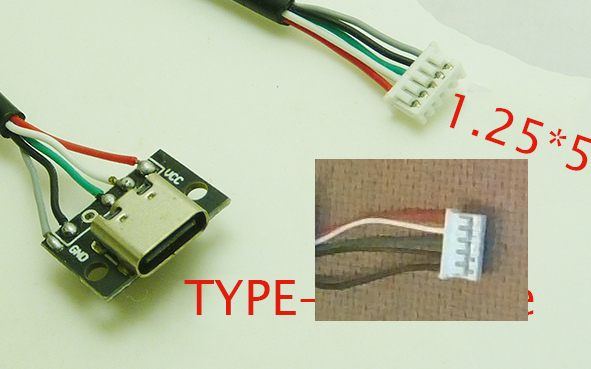🖲️
- 8 Posts
- 32 Comments

 1·1 year ago
1·1 year agoThat is my previous experience. I guess i missed it somehow.

 2·1 year ago
2·1 year agoIf LVM isn’t somehow mitigating the issue I will do a reinstall.
I have run out of space on
/before and it is a huge pain in the ass. I do not need much room for/homeon this system so I would prefer to be cautious and avoid problems down the road.Hopefully I will be able to figure out how to specify this… maybe a different installer image.

 8·1 year ago
8·1 year agoI have a form like this I do regularly for work. I actually fax the form, I don’t even send it electronically. But I like to fill it electronically so I have my records on the computer. Because it is 2023. I had to use my home computer (linux) to generate a copy of the form, then use a floss editor I managed to get working on windows work computer to annotate on top of the form fields. For some reason it’s really hard to get the annotations to line up with the form fields. So sometimes I have to correct it by hand after printing to clarify.
It is a zero security form, there is no need to have all this rigamarole. The form is freely available on the internet and anyone with a fucking fax machine could fill it in and send it on behalf of anyone else. Fax machine is the biggest hurdle; who the hell has one of those.

 1·1 year ago
1·1 year agoThanks!
I think I miiight have found an exact match: https://www.aliexpress.com/item/1005005073296395.html Not sure what a waterproof USB port is used for but it should do the trick. I’ll buy a few other connectors of similar size to hedge my bets and do as you say if this one doesn’t quite fit.
Looks like I’ll be starting a new plastic compartment container…

 1·1 year ago
1·1 year agoThe more exterior black wire is thicker than the other ones. You can’t really see it in the photos. I am thinking it is the same as the grey wire labeled as ground in the AE pic.
What am I measuring? The white box that clips in is exactly 1cm. All these connectors (which I believe are called JST) with 5 pins are labeled as being “1.25” but I can’t tell if that’s dimensional. But what else would it be? I can’t find any that are 1cm.

 2·1 year ago
2·1 year agoIt’s so weird how different shipping/distribution can be for different kinds of things. Keyboard-type stuff seems to suffer from it a lot. Even my favorite brand keychron, which seems like a legit business selling at low/mid price, only lists a tiny number of their items on amazon.ca. Buying direct from their website or aliexpress adds a big shipping charge.

 2·1 year ago
2·1 year agoOK thanks! It sort of looks like it would be possible but I didn’t want to go too aggressively at the existing cable until I have a replacement.
The aliexpress seller linked above repeats “The Line Sequence Needs To Be Changed” several times in the description. Maybe this is what that means?

 1·1 year ago
1·1 year agoa long as the letters don’t type upside down

 1·1 year ago
1·1 year agoI mean if I’m going to buy component for the purpose, and there is a clip type thing on the board already, it seems like just obtaining the correct part would be the thing to do if possible. Rather than buying the wrong piece, dismantling the device further and possibly breaking it in the process. (It is really cheap and flimsy.) I’ve spliced things but that’s like more something to do when salvaging or putting something together from what’s on hand.
Neat little gizmos though I’ll file it away for another project perhaps.

 5·1 year ago
5·1 year agoDo you think so? the letters are the right way up on the USB-C end. Here is how my existing cable looks in comparison:

The description lists the letters as VCC, D -, D+, GND, SG.

 4·1 year ago
4·1 year agoack shipping is >CA$30. maybe there is a local distributor.

 3·1 year ago
3·1 year agoUnderstood, thanks. I will keep in mind. Not in the US so sometimes shipping can be too much on these shopify stores for just 1 item but I will get from here if reasonable.

 3·1 year ago
3·1 year agoDo you think it matters that the wire colors are in the opposite order?
In either case, thanks this gets me closer.

 1·1 year ago
1·1 year agowhy is it better?

 1·1 year ago
1·1 year agojust to check my understanding: a 4 port card provides different capability than a 1 or 2 port card with a switch attached, yes?

 1·1 year ago
1·1 year agothanks for all the info!
i am definitely a person who will always change the defaults for no particular reason. so I appreciate the warning. except I don’t quite know what you mean by “assignments”. do you mean like the names?
eth0? or their functions? I do like the idea of having a physical jack that’s always guaranteed to allow access no matter what I foul up otherwise.all these years I have been running my home network with a collection of routers just kind of attached together in a way that shouldn’t work due to “double nat” according to everything I ever read, but it is pretty much functional if not at all optimized. maybe if you don’t believe in double nat it won’t happen to you.

 2·1 year ago
2·1 year agothanks! so for example: Intel Gigabit Dual PORT GIGABIT ETHERNET PCIe NIC Card EXPI9402PT NC360T which is CA$30. Does that sound right?

 11·1 year ago
11·1 year agoWhat’s a server card?
I’d prefer to avoid VMs if possible I never had much luck with them.

 1·1 year ago
1·1 year agothat sounds useful.
i like to keep things separate when plausible.



So you mean it would have no effect, yes? On restart it will have the same settings and firmware it did prior to pressing the reset button?
I looked at the QMK docs to see about using it from the terminal. But I am not clear about how to get around the issue of the firmware not being up to date.
I don’t quite trust various bits and pieces I’ve found about how to use it around the web. Like the configurator page for this device says
compared to the keychron docs I linked to in the OP which says
And also describes an actual reset button located under the space bar.
Why are they different…? It seems like keychron probab knows how to reset their own device. So I wonder if it is a good idea to load anything from this qmk page using methods I don’t understand well because I’d never be able to get myself out of a mess.